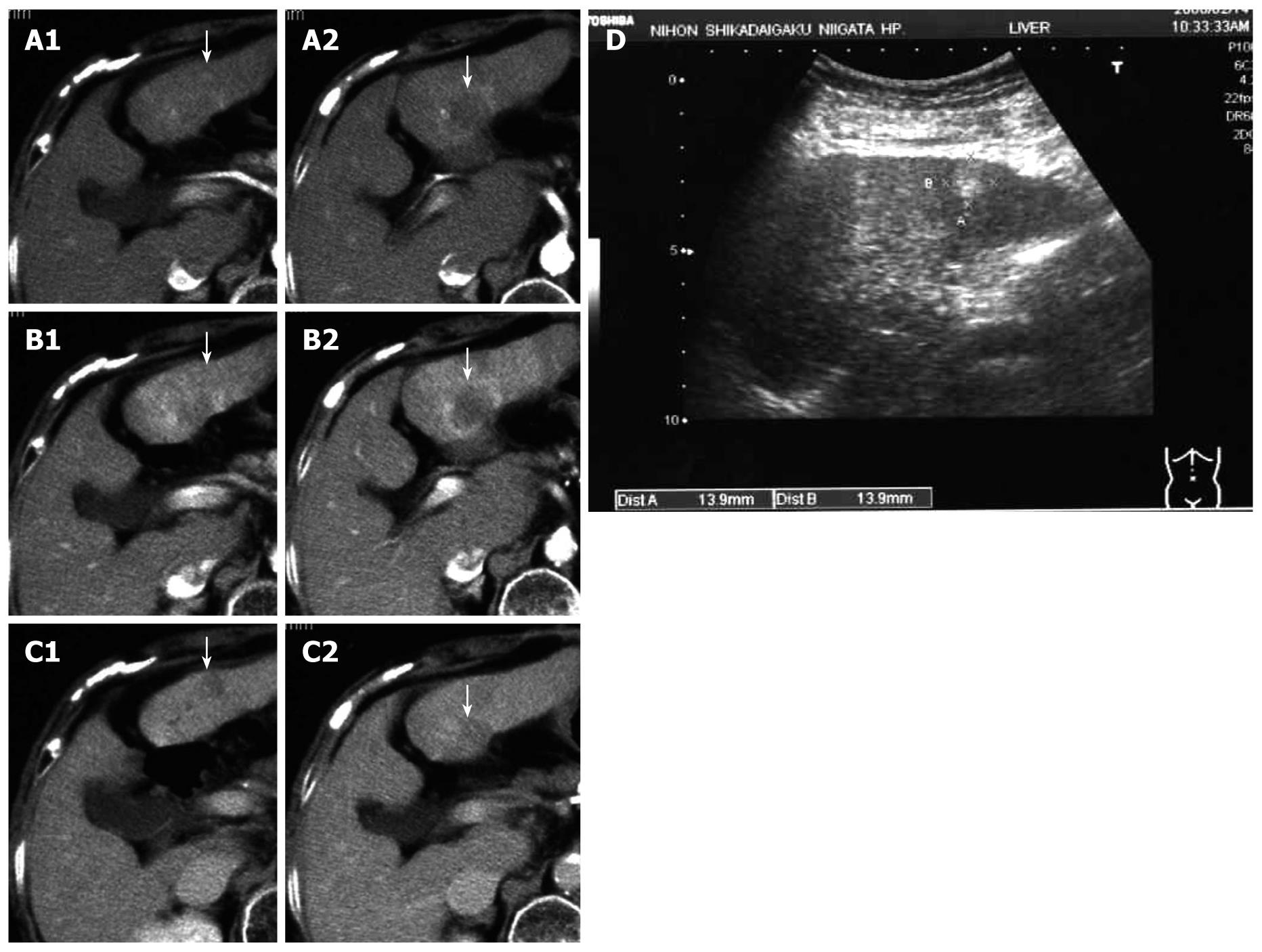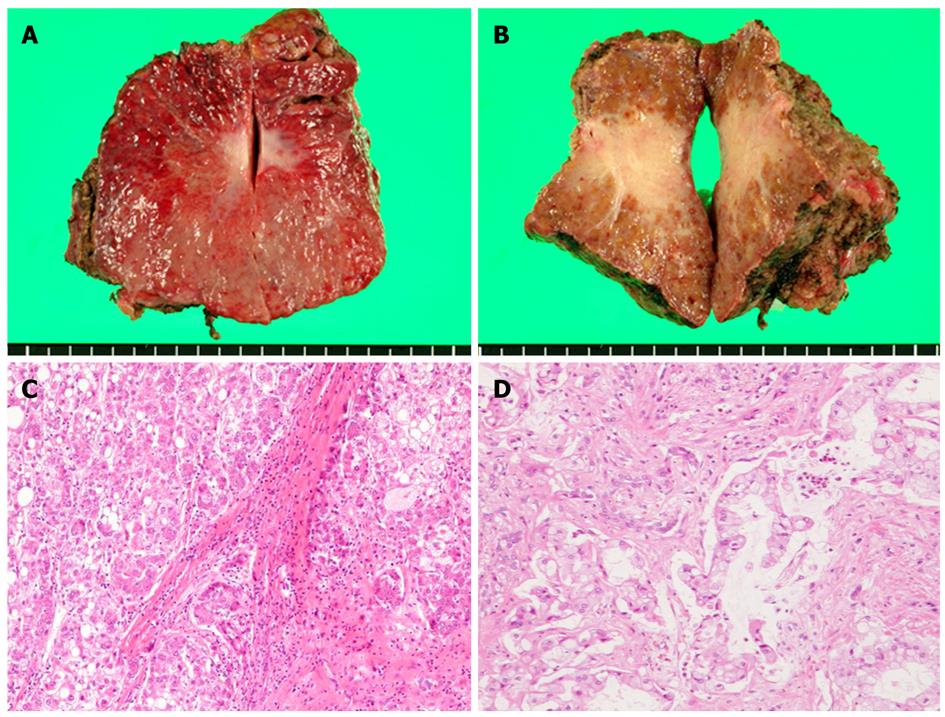Copyright
©2009 Baishideng.
World J Hepatol. Oct 31, 2009; 1(1): 103-109
Published online Oct 31, 2009. doi: 10.4254/wjh.v1.i1.103
Published online Oct 31, 2009. doi: 10.4254/wjh.v1.i1.103
Figure 1 Dynamic computed tomography findings at the onset of double cancer with hepatocellular and cholangiocellular carcinomas.
Two tumors, ~1 cm in diameter, were detected on the ventral and dorsal sides of S3. Arrows indicate the tumors (A1, A2 arterial phase; B1, B2 parenchymal phase; C1, C2 delayed phase). Angiographic findings at the onset of double cancer; D: A superior mesenteric arterial angiogram showing a large shunt through the epigastric vein during the portal phase (the arrows); E: Computed tomography during arterial portography (CTAP) showing a ~1 cm defect on the ventral side of S3 (the arrow), which was diagnosed as a classic hepatocellular carcinoma. No defect can be seen on the dorsal side of S3.
Figure 2 Dynamic computed tomography performed 12 mo after the first operation.
The tumor on the ventral side of S3 appears to be a classic hepatocellular carcinoma and that on the dorsal side of S3 appears to be increased to ~3 cm in diameter. Typical findings including enhancement of the peripheral portion of the tumor in the early (A1) and parenchymal (B2) phases, and the slight and gradual enhancement of the internal portion in the delayed phase were observed (C2). Arrows indicate the tumors (A1, A2 arterial phase; B1, B2 parenchymal phase; C1, C2 delayed phase). Subcutaneous ultrasonography performed 12 mo after the first operation (D); The tumor on the ventral side of S3 is represented by a hyperechoic mass, 14 mm in diameter, a finding characteristic of hepatocellular carcinoma rich in fat. The tumor on the dorsal side of S3 is also represented by a hyperechoic lesion, ~30 mm in diameter, with irregular and unclear margins. Arrows indicate the tumors (D).
Figure 3 Gross findings of the resected S3 subsegment.
A: The cut surface of the tumor on the ventral side of S3; B: The cut surface of the tumor on the dorsal side of S3. Histopathological findings of the two resected tumors; C: The tumor on the ventral side was pathologically diagnosed as a moderately differentiated hepatocellular carcinoma (HCC) (with nodular, trabecular, and plate-like components); D: The tumor on the dorsal side was pathologically diagnosed as a cholangiocellular carcinoma (CCC) (diffuse type showing a vestigial remnant of the tumor).
- Citation: Watanabe T, Sakata J, Ishikawa T, Shirai Y, Suda T, Hirono H, Hasegawa K, Soga K, Shibasaki K, Saito Y, Umezu H. Synchronous development of HCC and CCC in the same subsegment of the liver in a patient with type C liver cirrhosis. World J Hepatol 2009; 1(1): 103-109
- URL: https://www.wjgnet.com/1948-5182/full/v1/i1/103.htm
- DOI: https://dx.doi.org/10.4254/wjh.v1.i1.103











